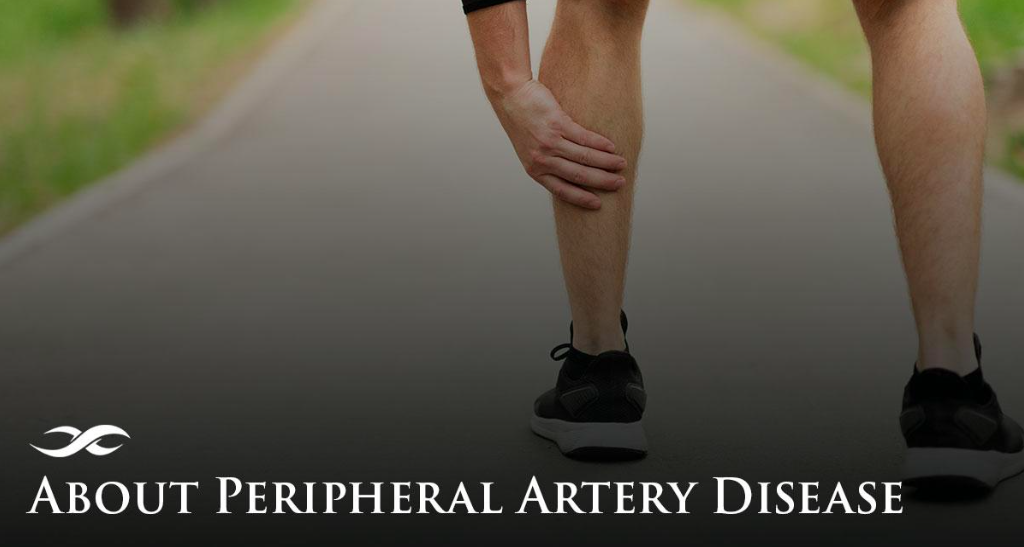About Peripheral Artery Disease

Peripheral artery disease (PAD) is an incredibly common condition that affects more than 3 million people in the US each year. It occurs when fatty deposits or plaque build up inside the vessels that carry blood to the legs and feet. When severe, it can lead to disability or the loss of foot or leg to amputation.
One in every 20 Americans over the age of 50 has peripheral artery disease. The following factors can put you more at risk for developing PAD:
- Aged 50+
- Smoker or history of smoking
- High blood pressure or hypertension
- High cholesterol
- Diabetes
- Heart disease, heart attack, or stroke
Symptoms
More than half of people with peripheral artery disease don’t exhibit any symptoms. For those that do show symptoms, the following are common:
- Discomfort, fatigue, heaviness, tiredness, and cramping in the leg muscles during activity
- Pain in the legs and/or feet that disturbs sleep
- Sores or wounds on toes, feet, or legs that heal slowly or not at all
- Color changes in the skin of the feet, including paleness and blueness
- Lower temperature in one leg compared to the other leg
- Poor toenail growth and/or decreased hair growth on legs
Diagnosis
The physicians at Vascular & Vein Institute of Siouxland use several methods to diagnose peripheral artery disease.
- Physical Exam – Examine legs, feet, and toes to discover weak or absent peripheral pulses and other signs of the disease
- Doppler Test – An ultrasound performed on the legs to determine the location of the blockage
- Peripheral Angiogram – An X-ray that allows your physician to find narrow or blocked areas in the arteries
Treatment
Mild peripheral artery disease can sometimes be treated with lifestyle changes and/or medication. Lifestyle changes that can be used to treat PAD include quitting smoking, eating healthier, and/or exercising regularly. Most medication management is aimed at mitigating risk factors by lowering blood pressure, reducing cholesterol, and/or managing diabetes.
When lifestyle changes and medication do not work, or PAD progresses in severity, several endovascular treatments aimed at restoring blood flow are available. These treatment options often help reduce pain, return patients to a more normal lifestyle, and can prevent or delay the risk of losing a leg or foot to amputation.
Call (605) 217-5617 to schedule an appointment with one of our physicians.
